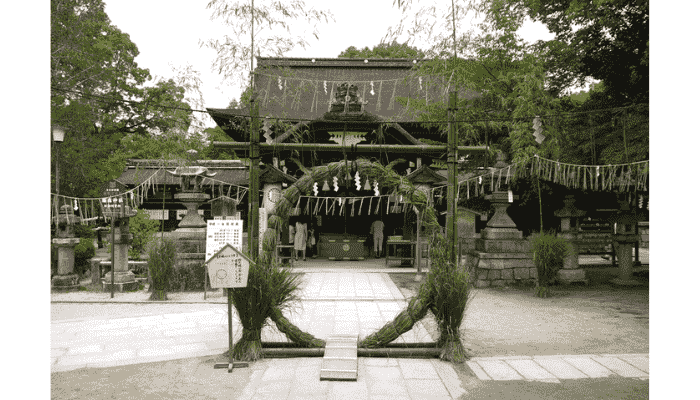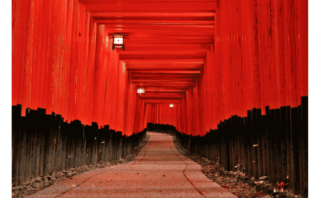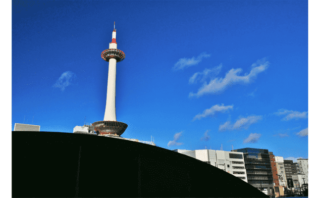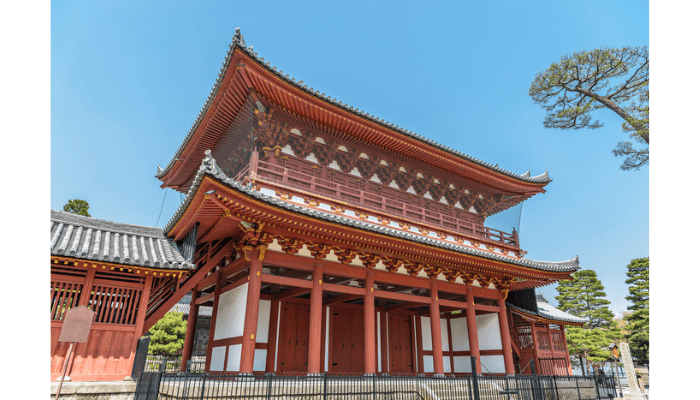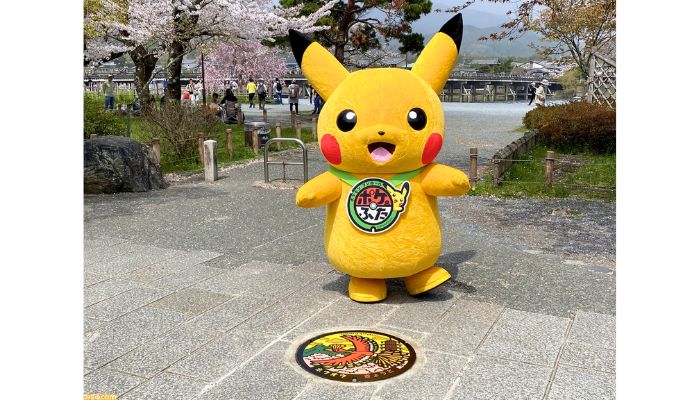Fujinomori Shrine is a historic shrine in Kyoto, known as a place of good fortune and a guardian of horses. It is especially popular among those involved in horse racing, who visit to pray for success.
In June, the shrine becomes a stunning sight as countless hydrangeas bloom, creating a colorful and enchanting atmosphere for visitors.
Located slightly away from Kyoto’s bustling city center, Fujinomori Shrine offers a peaceful and quiet environment, making it a great spot for those looking to experience a more tranquil side of Kyoto.
In this article, we’ll introduce the history and charm of Fujinomori Shrine, along with recommended nearby attractions. If you’ve already explored famous areas like Kiyomizu and Gion, why not take a break from the usual and discover a different side of Kyoto?
- About Fujinomori Shrine
- The History of Fujinomori Shrine
- How to Get to Fujinomori Shrine
- Highlights of Fujinomori Shrine
- 2. Stunning Hydrangeas in Full Bloom
- 3. “Fuji no Mizu” – The Sacred Water of Fujinomori Shrine
- Fujinomori Shrine’s Amulets & Goshuin Stamps
- Explore Nearby Attractions Along with Fujinomori Shrine!
About Fujinomori Shrine
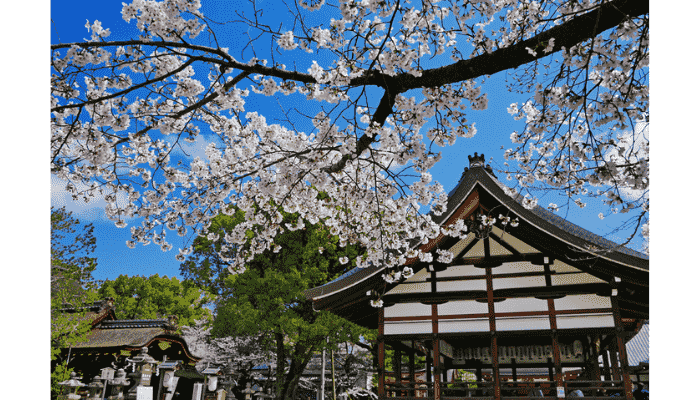
Fujinomori Shrine is a historic Shinto shrine located in Fushimi Ward, Kyoto. Situated west of Kyoto University of Education, it has a solemn and sacred atmosphere.
For centuries, the shrine has been worshiped as a place of good fortune for competitions and success, making it a beloved site among locals. It is also known as the birthplace of the Shobu no Sekku (Iris Festival), celebrated on May 5th.
Today, Fujinomori Shrine is especially popular among horse racing enthusiasts and professionals, who visit to pray for success in competitions.
In June, the shrine’s two hydrangea gardens burst into full bloom, attracting many visitors with their vibrant colors and breathtaking beauty.
Fujinomori Shrine
- Address: 609 Fukakusa Toriizakicho, Fushimi-ku, Kyoto, Japan
- Map: [Google Maps]
- Access:
- By Train: 7-minute walk from Keihan Sumizome Station / 5-minute walk from JR Fujinomori Station
- By Bus: Get off at “Fujinomori Shrine” bus stop (right in front of the shrine)
- Phone: +81 75-641-1045
- Hours: 9:00 AM – 4:00 PM
- Admission: Free
- Official Website: [Fujinomori Shrine]
The History of Fujinomori Shrine
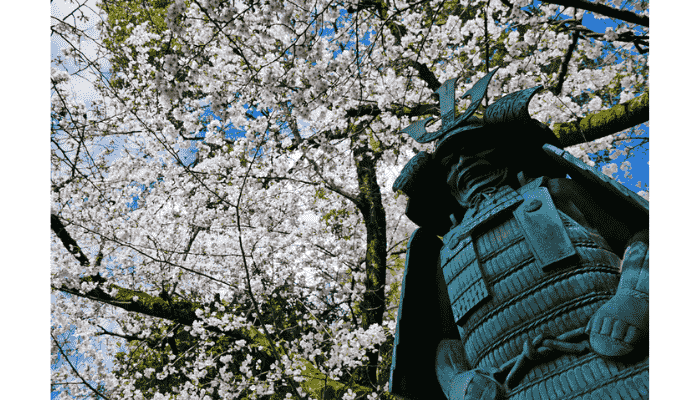
Fujinomori Shrine was founded about 1,800 years ago and has deep ties to the Japanese imperial family. It is said to have been established by Empress Jingu and later merged with three nearby shrines to become what it is today.
The main hall of the shrine dates back to 1712 (Shōtoku 2), gifted by Emperor Nakamikado.
Many people associate Fujinomori Shrine with horse racing, and for good reason. Since ancient times, it has been worshiped as a shrine of victory, attracting horse owners, jockeys, and racing fans who come to pray for success. Within the shrine grounds, you’ll even find a large statue of a sacred horse.
Fujinomori Shrine became famous as a horse-racing shrine due to its Kakeuma-shinji, a sacred horse-riding ritual held during the Fujinomori Festival. This tradition solidified its reputation as a shrine for horse-related blessings, making it especially revered by those in the horse racing industry.
In addition to being a shrine of victory, Fujinomori Shrine also enshrines Prince Toneri, the editor of the Nihon Shoki (Japan’s oldest historical chronicle) and Japan’s first scholar. Because of this, the shrine is also worshiped as a place of academic success.
How to Get to Fujinomori Shrine
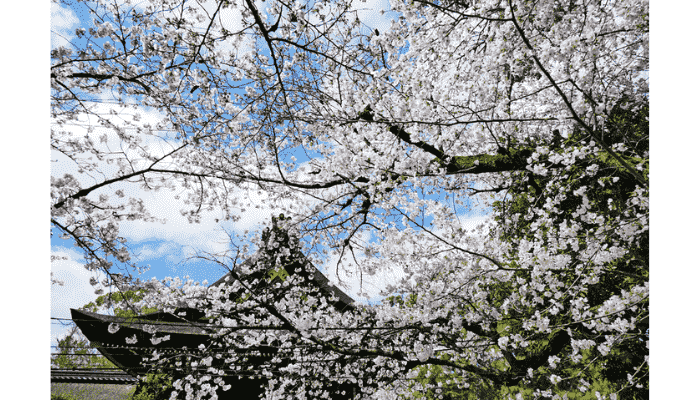
If you’re coming from Kyoto Station, the JR Nara Line is the most convenient option. Take a train to JR Fujinomori Station, which is about a 10-minute ride from Kyoto Station. From there, it’s a short walk to the shrine, so you can reach your destination in around 20 minutes total.
Thanks to its easy access from Kyoto Station, Fujinomori Shrine is a great spot to visit without much hassle.
Public Transportation Options:
By Train:
- JR Nara Line: Get off at JR Fujinomori Station, then walk about 5 minutes.
- Keihan Line: Get off at Sumizome Station, then walk about 7 minutes.
By Bus:
Take a city bus to “Fujinomori Shrine-mae” stop, which is right in front of the shrine.
Highlights of Fujinomori Shrine
Fujinomori Shrine, known as the “God of Horses” and the “God of Learning,” has many fascinating features. If you visit, be sure to check out these highlights!
1. The Thrilling “Kakeuma Shinji” (Horseback Acrobatics Ritual)
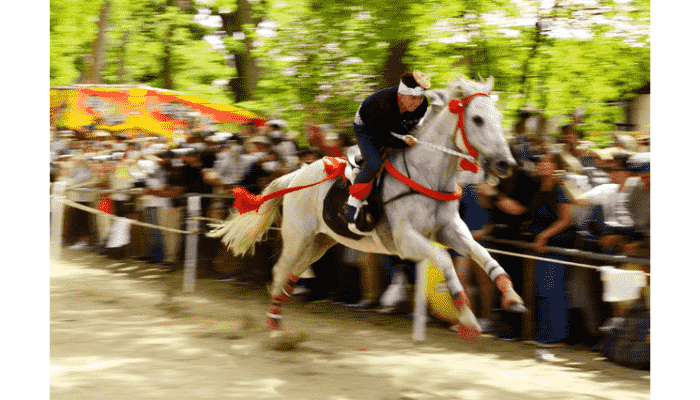
One of the most famous events at Fujinomori Shrine is the Kakeuma Shinji, a traditional horseback acrobatics ritual.
When?
This event is held every year during the Fujinomori Festival from May 1st to May 5th. The festival itself has a 1,200-year history and features food stalls, performances, and lively celebrations.
What Happens?
Skilled riders perform seven types of daring tricks while galloping at full speed! These include:
- Side riding
- Backward riding
- Writing kanji while riding
…and more!
Since these tricks are performed while the horses are in motion, there’s always a risk of falling, making the event incredibly thrilling to watch.
Where to Watch?
The horses race along the approach from the South Gate to the worship hall, passing right in front of the spectators. You can feel the power and speed of the horses up close, making it an unforgettable experience!
2. Stunning Hydrangeas in Full Bloom
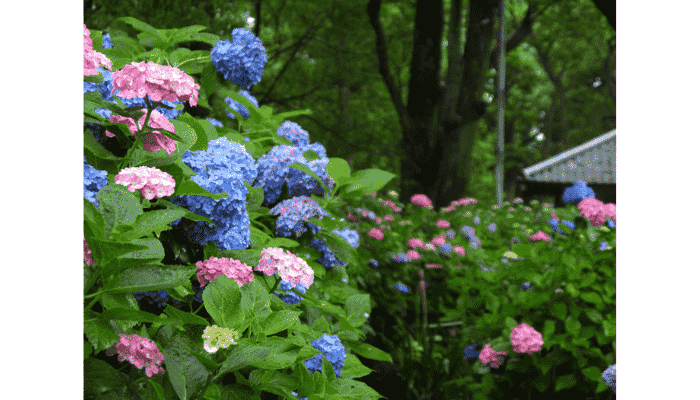
In June, Fujinomori Shrine transforms into a breathtaking sea of hydrangeas. Around 3,500 hydrangea plants bloom, creating a vibrant and colorful landscape.
Every year, the Ajisai Matsuri (Hydrangea Festival) is held for about one month in June.
- Festival Period: Throughout June
- Opening Hours: 9:00 AM – 4:00 PM (Note: The hours are relatively short!)
During the festival, special hydrangea-themed goshuin are available. These stamps come in two colors, blue and red, and are limited in quantity—so if you want one, be sure to visit early!
To enter the Hydrangea Garden, there is a 300-yen entrance fee, which grants access to both the First and Second Hydrangea Gardens within the shrine grounds.
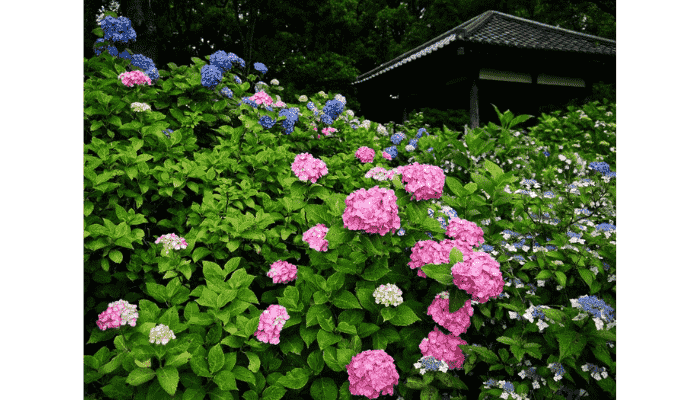
Each garden has a unique atmosphere.
- First Hydrangea Garden – Bright and colorful, with plenty of sunlight.
- Second Hydrangea Garden – Tranquil and serene, where hydrangeas bloom in a peaceful setting.
While exploring the gardens, you might spot a rare heart-shaped hydrangea! It’s not easy to find, so if you do, consider yourself lucky.
3. “Fuji no Mizu” – The Sacred Water of Fujinomori Shrine
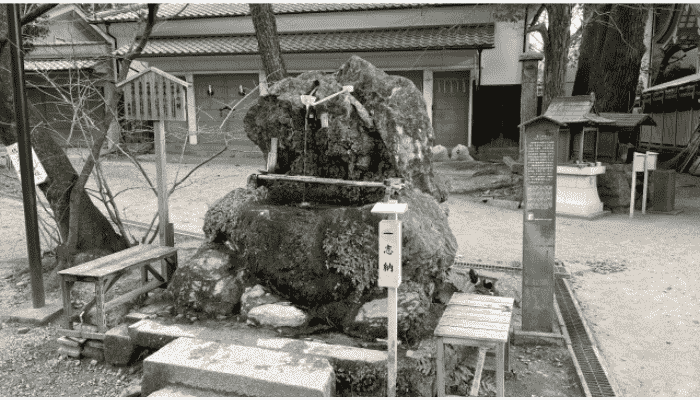
The Fushimi area, where Fujinomori Shrine is located, is famous for its high-quality spring water. This natural resource has made the area a major hub for sake brewing for centuries.
Behind the main shrine, you’ll find a sacred spring known as “Fuji no Mizu”. Its name means “unparalleled water”, reflecting its exceptional purity and taste. Many locals come here to collect the water, appreciating its refreshing smoothness.
This water comes from deep underground, staying cool even in summer. It is said to bring good fortune and victory to those who drink it.
If you’re visiting Fujinomori Shrine, consider bringing a bottle to taste this famous sacred water yourself!
Fujinomori Shrine’s Amulets & Goshuin Stamps
Fujinomori Shrine is known as a guardian of victory and success. Here’s a look at its special amulets (omamori) and goshuin stamps.
1. Amulets (Omamori) of Fujinomori Shrine
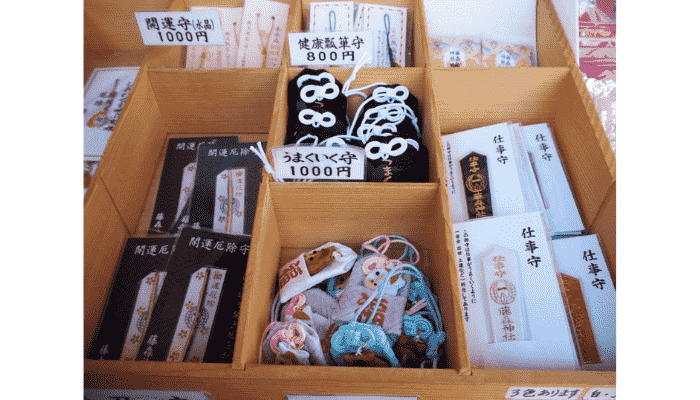
Fujinomori Shrine offers many amulets for academic success (gakugyo-mamori) and good fortune in competitions (shoun-mamori).
One of the shrine’s most distinctive charms is the Kachimamori, or Winning Horse Amulet. Since Fujinomori Shrine is also known as a deity of horses, many of its amulets feature horse motifs.
In addition to horse-themed charms, you can also find an amulet inspired by Fujinomori Shrine’s famous hydrangeas.
2. Goshuin Stamps of Fujinomori Shrine
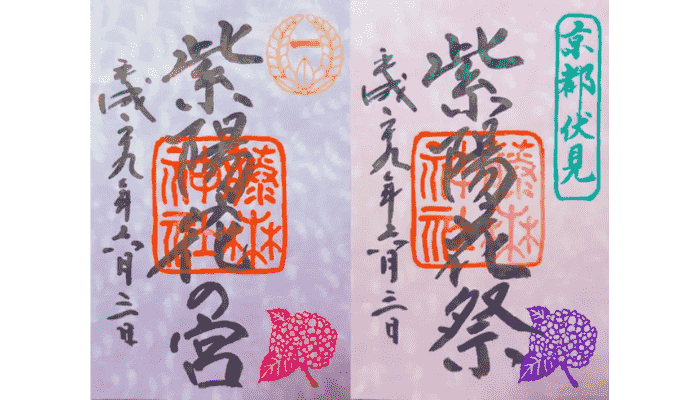
Fujinomori Shrine offers regular goshuin stamps, but it also has special seasonal designs.
During the hydrangea season in June, a limited-edition goshuin featuring hydrangea artwork is available.
The shrine also releases special commemorative stamp at different times throughout the year.
Goshuin stamps are available at the amulet office, located toward the back of the shrine.
Hours: 9:00 AM – 4:00 PM
Tip: Limited-edition goshuin often sell out, so it’s best to arrive early!
Explore Nearby Attractions Along with Fujinomori Shrine!
Fujinomori Shrine is located in the Fushimi area, on the southern side of Kyoto, closer to Osaka.
Some of the most famous attractions nearby include:
Fushimi Inari Taisha – Kyoto’s iconic shrine with thousands of red torii gates
Gekkeikan Okura Sake Museum – A must-visit for sake lovers, showcasing Fushimi’s rich brewing history
Since this area is a bit far from central Kyoto’s famous spots like Kiyomizu-dera and Gion, why not take the opportunity to fully explore the Fushimi area during your visit?
1. Fushimi Inari Taisha
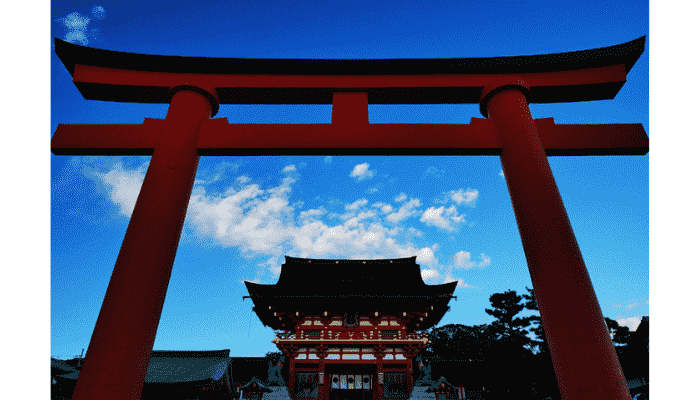
Fushimi Inari Taisha, often called “Oinari-san”, is one of Kyoto’s most famous shrines. It is located just one stop from Fujinomori Shrine on the JR Nara Line, making it an easy stop after your visit. Since it’s on the way back toward Kyoto Station, it’s a great place to explore before heading into the city.
As the head shrine of all Inari shrines in Japan, Fushimi Inari Taisha is always bustling with visitors. It’s especially popular among international tourists, and you’ll often see people wearing colorful yukata as they explore the area.
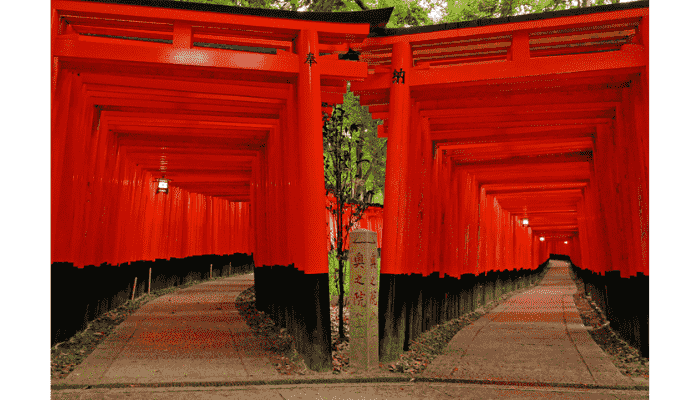
One of the shrine’s most famous features is the thousands of vermillion torii gates stretching from the base to the summit of Mount Inari, known as “Senbon Torii” (Thousand Torii Gates).
If you want to hike the entire trail, it takes about 4 km (2.5 miles) and around 2 hours to complete. Since it’s a long and slightly challenging hike, wearing comfortable sneakers is highly recommended.
For a shorter visit, walking to the Oku-no-sha Shrine takes only about 5 minutes and still offers a great experience of the famous torii gates.
If you have extra time, consider going a bit further to Yotsutsuji Intersection, about 30 minutes from the base. From here, you’ll be rewarded with a beautiful panoramic view of Kyoto.
Tips for Visiting
- The hike can be strenuous, especially in summer, so be sure to bring water and stay hydrated.
- Entrance is free, and the shrine is open 24/7, making it a great spot to visit early in the morning or late at night to avoid crowds.
Fushimi Inari Taisha
- Address: 68 Fukakusa Yabunouchicho, Fushimi Ward, Kyoto
- Map: Google Maps
- Access:
- JR Nara Line – Right in front of Inari Station
- Keihan Main Line – 5-minute walk from Fushimi Inari Station
- Phone: 075-641-7331
- Hours:
- Shrine Grounds: Open 24 hours
- Prayer Services: 8:30 AM – 4:30 PM (last reception at 4:00 PM)
- Amulets & Charms: 8:00 AM – 5:30 PM
- Admission: Free
- Official Website: Fushimi Inari Taisha
2. Jonangu Shrine
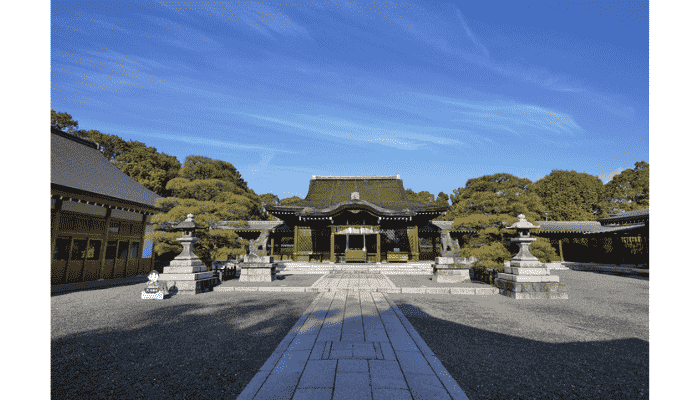
Jonangu Shrine is a historic Shinto shrine established in the Heian period as a guardian deity of the capital’s southern entrance. It is widely revered as the “Great Shrine of Protection from Evil”, offering blessings for safe travels and protection from misfortune.
Jonangu is famous for its beautiful garden, Shinen, often called the “Flower Garden of The Tale of Genji.” Here, visitors can enjoy the breathtaking scenery of seasonal flowers and autumn leaves throughout the year.
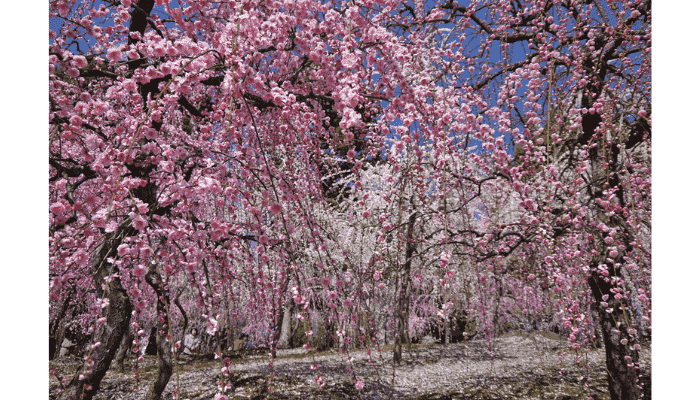
The garden is home to a wide variety of plants, including weeping plum blossoms, camellias, cherry blossoms, and wisteria, creating a stunning landscape in every season.
One of Jonangu’s most famous traditions is “Kyokusui no Utage”, a Heian-era poetry ritual held twice a year in spring and autumn. Participants dressed in traditional Heian costumes sit by a small stream, composing waka poetry as sake cups float by. This graceful ceremony is a well-known seasonal event in Kyoto.
If you’re looking for a peaceful retreat to escape the busyness of daily life, Jonangu’s serene garden is the perfect place to relax and refresh your mind.
Jonangu Shrine
- Address: 7 Nakajima Tobarikyu-cho, Fushimi Ward, Kyoto
- Map: Google Maps
- Access:
- Keihan Main Line – 7-minute walk from Chushojima Station
- Keihan Main Line – 7-minute walk from Fushimi-Momoyama Station
- Kintetsu Kyoto Line – 8-minute walk from Momoyama-Goryo-mae Station
- Phone: 075-623-0846
- Hours:
- Shrine Grounds: Open all day
- Garden (Shinen): 9:00 AM – 4:30 PM (last entry at 4:00 PM)
- Admission (Garden Entry Fee):
- Regular Season (Jan 1 – Jul 21, Sep 1 – Dec 31): ¥600 (Adults), ¥400 (Children)
- Summer Season (Jul 22 – Aug 31): ¥200 (Adults & Children) (Some garden areas closed during summer)
- Official Website: Jonangu Shrine
3. Gekkeikan Okura Sake Museum
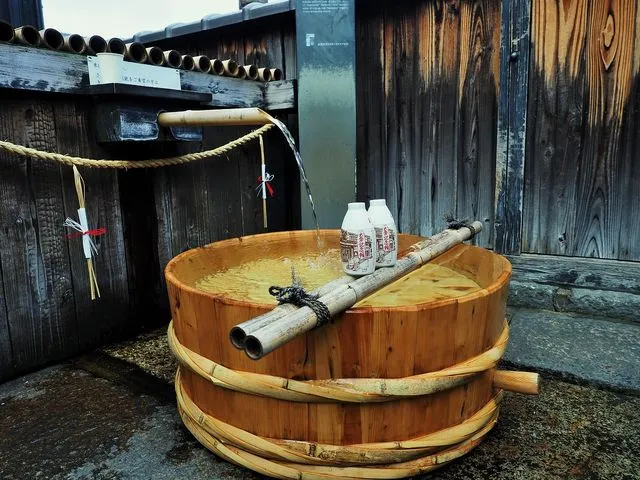
Fushimi is famous for sake brewing, and you can find many traditional sake breweries throughout the area. These breweries are an iconic part of Fushimi’s landscape. Among them, one of the most well-known is Gekkeikan, a historic sake brewery with a long tradition.
The Gekkeikan Okura Sake Museum is a sake-themed museum where visitors can learn about the history of sake brewing in Fushimi and explore the rich heritage of Gekkeikan. The museum displays traditional brewing tools that have been used for centuries, offering a fascinating insight into the sake-making process.
After touring the museum and learning about sake brewing techniques, visitors can enjoy a sake tasting experience. You can select three types of sake from a variety of options, making it a great opportunity to discover your favorite.
If you cannot drink alcohol, such as when driving, you will receive a 180ml bottle of sake to take home instead. This way, you can still enjoy a taste of Gekkeikan’s craftsmanship later.
For anyone interested in Japanese sake, the Gekkeikan Okura Sake Museum is a must-visit destination in Fushimi. It offers the perfect mix of history, culture, and hands-on tasting experiences.
Gekkeikan Okura Sake Museum
- Address: 247 Minamihama-cho, Fushimi Ward, Kyoto
- Map: Google Maps
- Access:
- 5-minute walk from Chushojima Station (Keihan Line)
- 5-minute walk from Chushojima Bus Stop (Kyoto City Bus)
- Phone: 075-623-2056
- Hours: 9:30 AM – 4:30 PM (last entry at 4:00 PM)
- Closed:
- Obon Holiday (Aug 13 – Aug 16)
- New Year’s Holiday (Dec 28 – Jan 4)
- Admission Fees:
- Adults (20 and over): ¥600
- Teens (13–19 years old): ¥100
- Children (12 and under): Free
- Official Website: Gekkeikan Okura Sake Museum
In this article, we introduced the history of Fujinomori Shrine, its main highlights, and recommended attractions nearby.
Fujinomori Shrine is famous for bringing victory in competitions and is also known as a shrine for horses. Many horse racing enthusiasts and athletes visit to pray for success.
In June, the shrine’s two hydrangea gardens reach their peak bloom, creating a stunning display that attracts many visitors.
If you have an important competition or challenge ahead, why not visit Fujinomori Shrine and pray for good luck?
